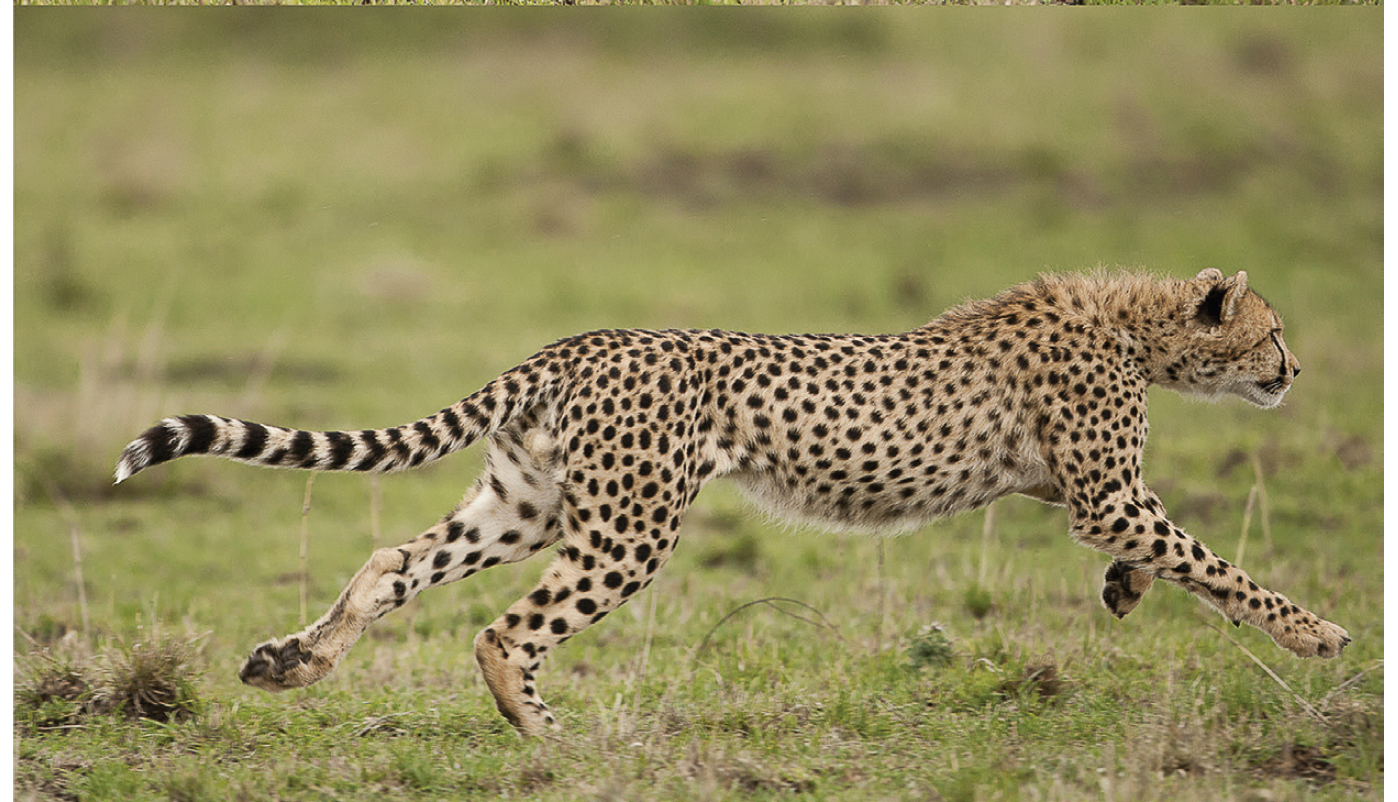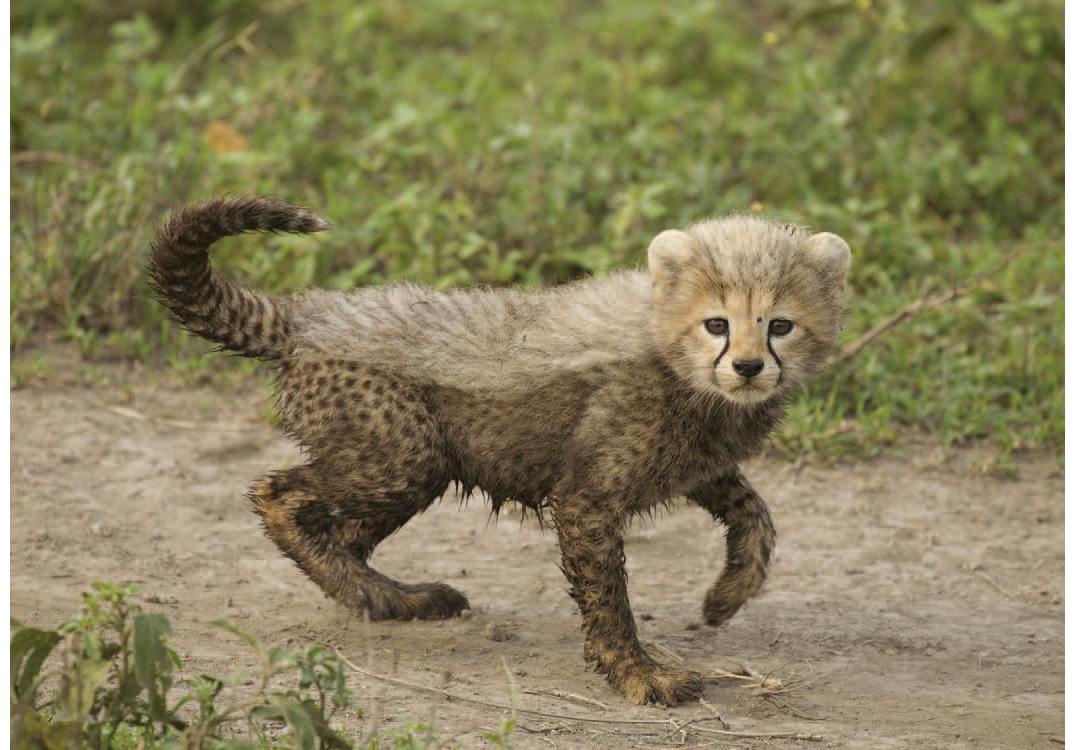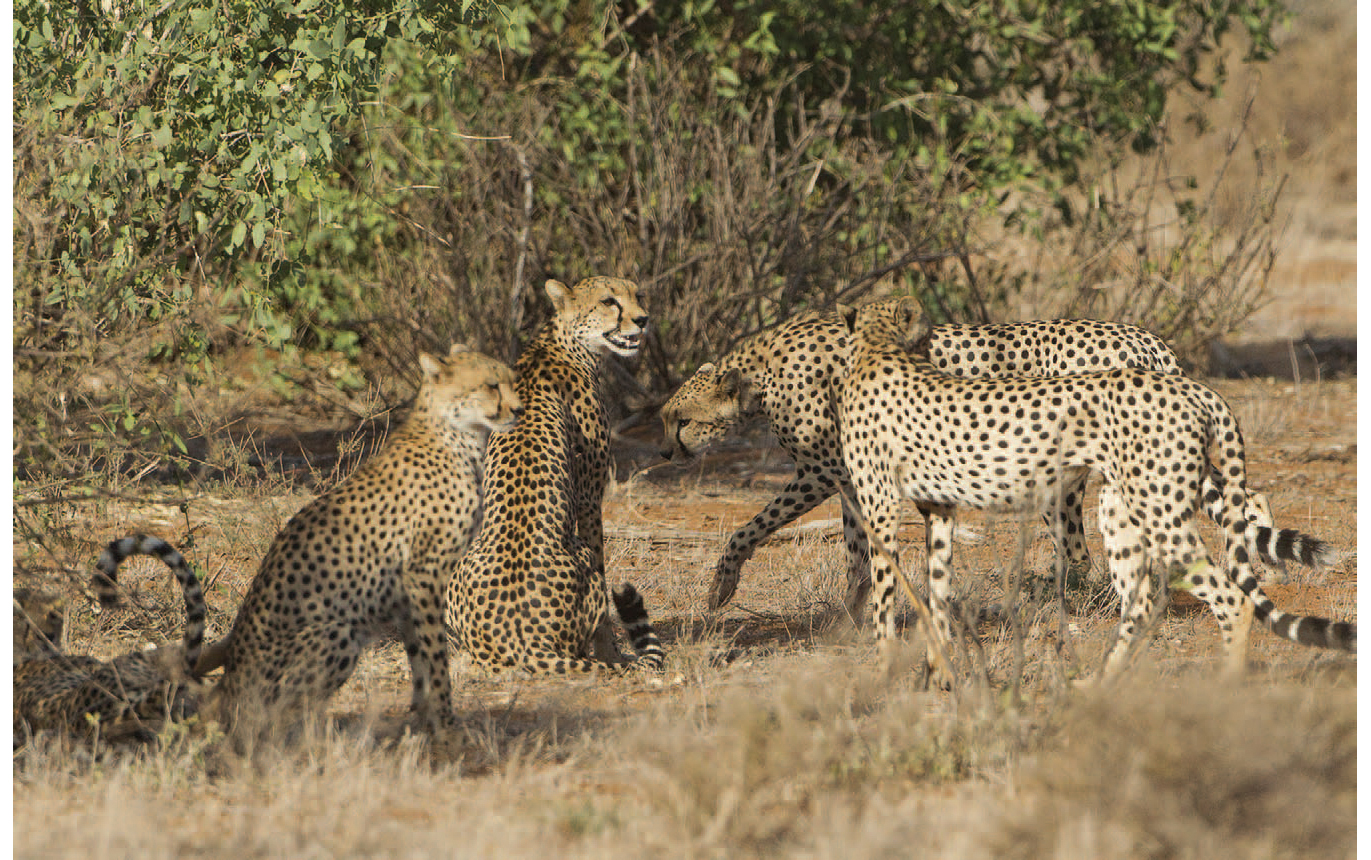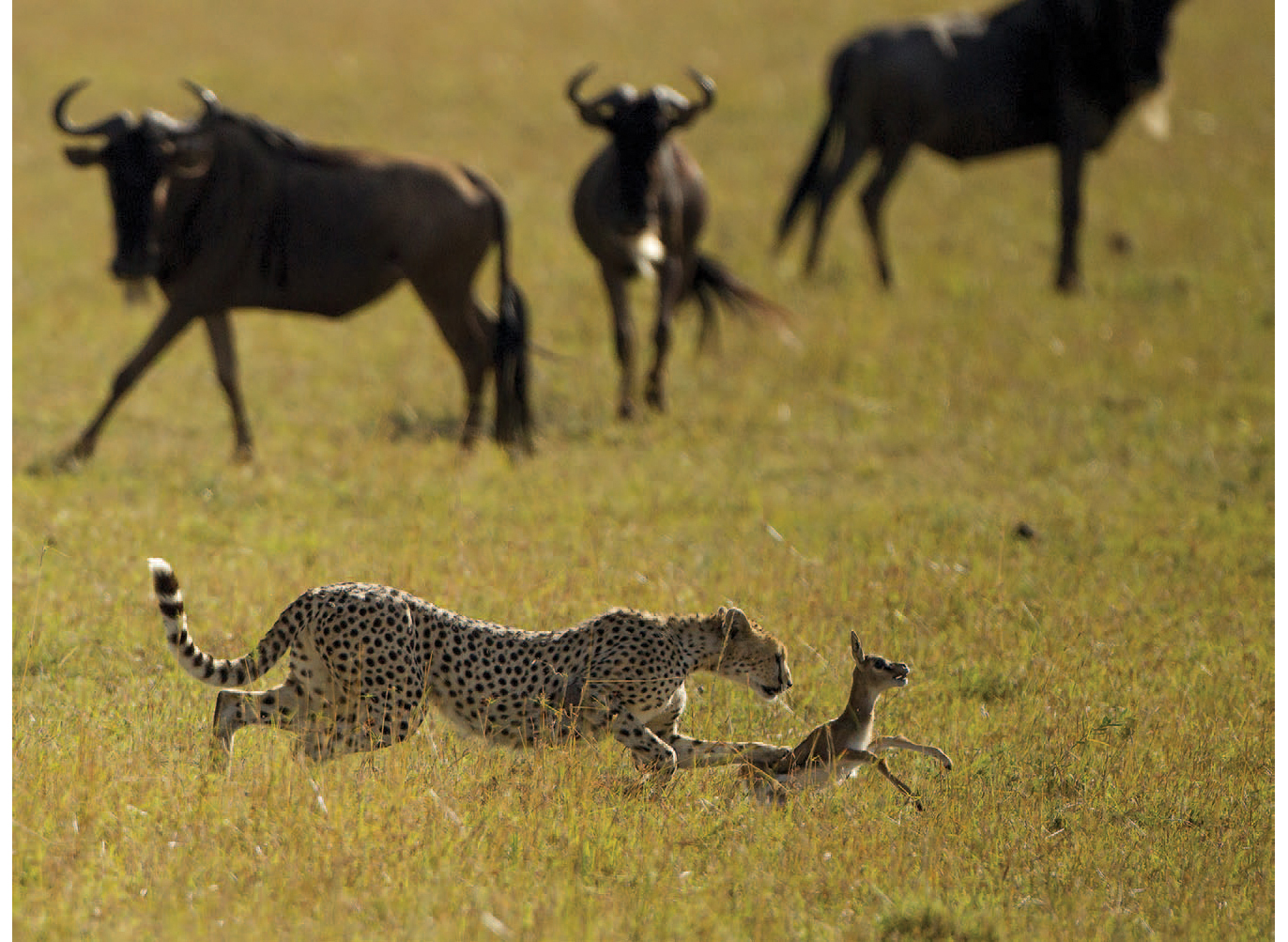
The Ultimate Sprinter
Built as the ultimate sprinter, the Cheetah is the fastest running land animal in the world. While their exact top speed is disputed, ranging from 55 to 75MPH, nothing is faster, and the acceleration is even more impressive—from 0 to 60MPH in 3 seconds.

Non-Retractable Claws
Unlike all other cats, Cheetahs have non-retractable claws, just like members of the dog family. The claws give better traction, just as track spikes would; consequently, they’re not as sharp as other cats’ and are not used for gripping prey.

The Spring in their Step
Cheetahs have a flexible spine, providing for greater spring as their backbone flexes and extends, propelling the cat at tremendous speeds. The dew claws on their front legs function like hooks, snagging and tripping their prey.



The Tail
The Cheetah’s tail is used like a rudder, providing counter-balance as the cat tilts and swerves as it races after a fleeing gazelle, whose only hope of escape is by erratic moves left or right. In a straight-on race, the Gazelle has little chance.

In Close Proximity
Two five-month-old Cheetah cubs jog along, following their mother. Unlike Leopards, Cheetah moms keep their cubs nearby, only leaving them when she executes a hunt.

Wrestling
Wrestling plays an important role in their development, and cubs will practice tripping and take-downs soon after they begin to walk.

The Cheetah’s tail is used like a rudder, providing counter-balance as the cat tilts and swerves . . .
An Opportunity for Fun
Young cubs take every opportunity to play as they follow their mother. Cubs frequently jump at their mother’s neck or tail, or practice neck holds on each other.

Dens
Cheetah mothers give birth in rocky dens or isolated areas of tall grass. In the grasslands, cubs are killed when safari drivers go off-track, sometimes while they are looking for the cubs. Today, some parks close denning areas to prevent such deaths.

A Mother’s Love
Cheetah mothers will carry their very young cubs to new den sites. This cub is nearly too big to carry but had straggled along, requiring the attention of its impatient mother.

A Fairly Quiet Cat
Like the Puma, a Cheetah’s contact call, summoning a cub or another Cheetah, sounds like a chirping bird. Unlike other cats, Cheetahs are rarely vocal, and they, like Pumas, cannot roar.

Cub or Honey Badger?
Cubs face many predators, especially in their first two months of life, when they are most vulnerable. Young cubs, however, resemble one of the most fearsome and aggressive African animals, the Honey Badger. From a distance, the two look quite similar, and this mimicry discourages any closer inspection.


Full of Affection
Cheetahs are especially affectionate. This mother and her cub mutually groom, licking each other’s face for several minutes. The Cheetahs’ speed, beauty, and gentleness toward each other make them a favorite with many tourists on safari.

Guard Hairs
This cub still sports the long guard hairs that give it a Honey Badger appearance. As the cub grows, only a scruff on the nape of the neck remains. It is often the only clue distinguishing a mother Cheetah from her nearly full-grown cubs.

A Tender Moment
A cub pauses for a tender moment while her brother attempts to nurse. Cheetah mothers usually have three to five cubs, but their survival rate is low, and only 30 percent survive their first year. Only one in twenty cubs survive to adulthood.

Against the Odds
This mother Cheetah in Kenya’s Masai Mara raised five cubs to near adulthood. At least to this point, they avoided predation by Lions, Leopards, Spotted Hyenas, Pythons, and birds of prey. Still, their chance of survival was not guaranteed.

Together Forever
Cheetah brothers remain together for life, while females are solitary unless they have cubs. Here, two adult male Cheetahs have cornered a mother Cheetah with her nearly full-grown cub. Although cubs can be killed in these encounters, this story ended happily.

An Elevated State
Cheetahs often survey their hunting grounds from high vantage points, using rocks or even, in some parks, the roofs of safari vehicles. If prey is spotted, the cat will begin a careful stalk.

Striking Distance
The Cheetah is a sprinter, not a long distance runner, and most chases do not begin until the Cheetah is within seventy yards or less from its potential victim. In this case, a Cheetah surprised a fawn that bolted in fear. Had the fawn lay still, as they often do, it would have been safe.

A Favorite Prey
Fawn Thompson Gazelles are a favorite prey. When chased, their only hope of escape is to get lost in the fleeing herd, then drop down and freeze, motionless. Most don’t do this, making them an easy catch for the Cheetah.

A Challenging Feat
A Cheetah mother has a very difficult time hunting when she has cubs old enough to be mobile but still too young to understand the need to stay hidden from the eyes of their prey. Many hunts are ruined when curious cubs bound up to their stalking mother, alerting the prey.

After the Catch
After catching this Steenbok, one of East Africa’s smaller Antelopes, this Cheetah carried the kill until it reached a small thicket of brush. Cheetahs rarely feed in the open, as this may draw vultures who could in turn attract Hyenas and Lions that would steal the kill.

Hunting Practice
Cheetah mothers will subdue but not kill small prey, like this Thompson Gazelle fawn, for their cubs to practice their hunting skills. The mother keeps a watchful eye, making sure that an inexperienced cub doesn’t let a potential meal escape.

Rite of Passage
When the cubs are old enough, the entire family may participate in a hunt. Here, three cubs joined their mother in a successful chase of a Reedbuck. At this stage, cubs are ready for independence.

The Cheetah and the Hare
While stalking a distant herd of Gnus, this Cheetah surprised an African Hare. The Hare bounded away and the Cheetah, naturally, gave chase. The Hare got away.

A Surprising Turn of Events
When a Cheetah charged into a line of Gnus, targeted on a calf, I was certain she would be successful. Surprisingly, the calf’s mother did not join her herd in a bolting panic but turned and chased after her calf, driving the Cheetah off before she could make her kill.

Grooming
After a successful hunt, Cheetahs will fastidiously groom one another, licking blood clear of faces and necks. Unlike other cats, Cheetahs rarely, if ever, fight over a kill, and disputes over a meal involve little more than tugging matches.

Declining Numbers
The five cubs shown earlier (“Against the Odds,” page 110) were reduced to three when we saw again almost a year later. Although the family successfully crossed the Talek River this time, a few weeks later, a Nile Crocodile snatched one of the cubs during a crossing.

Just Two Remain
Still not independent, only two of the original five cubs were left. Considering one in twenty Cheetah cubs reach adulthood, we worried about the prospects of the two surviving cubs.

Strength in Numbers
A lone male Cheetah has dim prospects for survival. If encountered by a pair or trio of males, he may be killed and even eaten. Male coalitions are comprised of brothers from the same litter, unlike male Lion coalitions, which can include unrelated but similar-aged cats.

A lone male Cheetah has dim prospects for survival. If encountered by a pair or trio of males, he may be killed and even eaten.